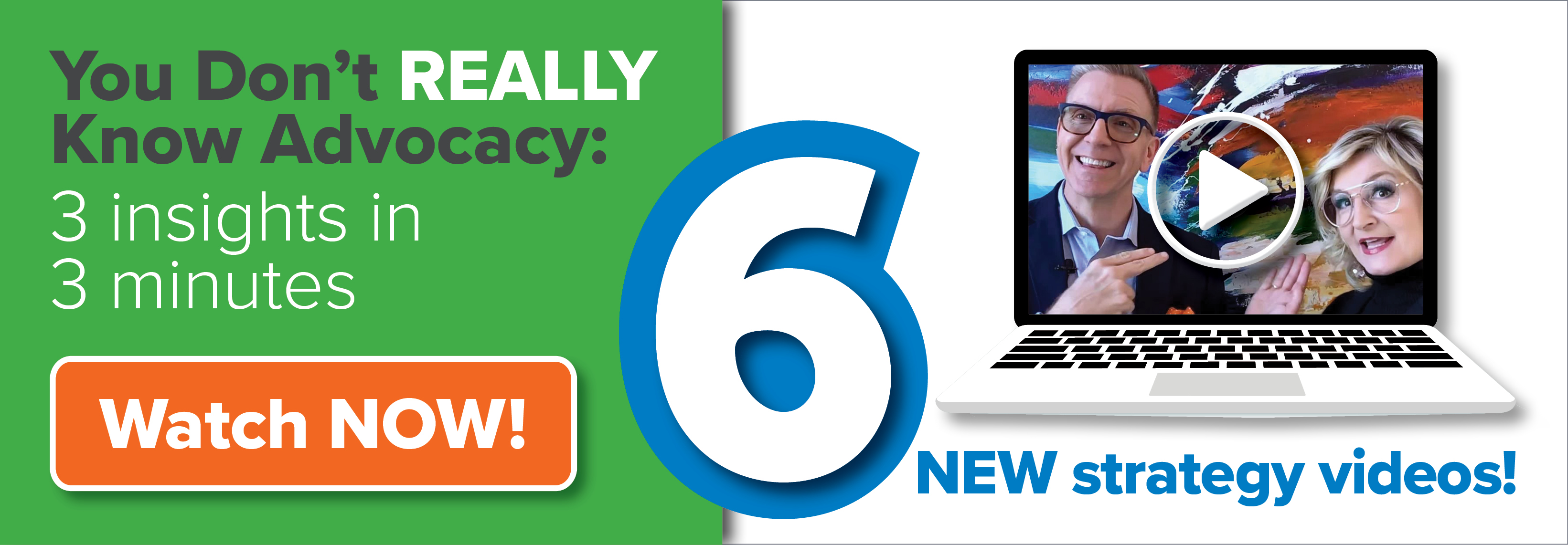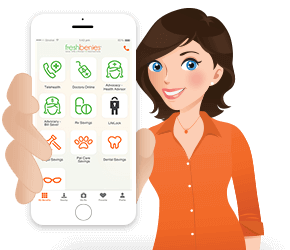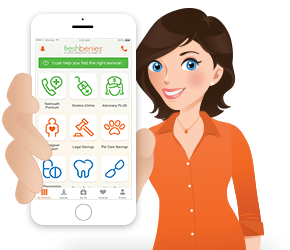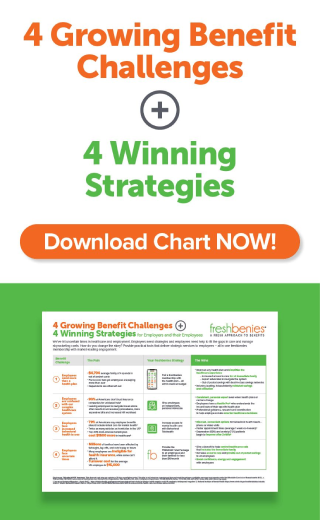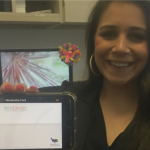4 Dumb Things Smart Brokers Believe
Do you ever find yourself standing at a doorway, pushing hard and getting nowhere? And then realize it’s a PULL door? Yeah. Been there.
Do you dread renewal planning meetings with the constant rate increases and resulting reduction in benefits? Even in today’s price-sensitive market, you can change the story. One common employer complaint is, “We need to get our employees to think differently about their healthcare. How can we get people to be more engaged and empowered?”
I’m not saying it’s simple, but it’s 100% necessary to change employee and employer perspectives. To achieve this, we can’t just keep pushing on the door in the same way, we can’t ignore the issue and we can’t use our common responses about why it won’t or doesn’t work.
Therefore, I’m sharing 4 misconceptions about non-insurance services to show why they should be considered as part of every strategic benefits plan discussion…

Last week, a broker said this to me, “Okay, I know your program gets high usage [of telehealth and the other services] and I understand it more than pays for itself in unnecessary claims. But telehealth is ‘free’ inside the medical plan, so how do I reconcile that?”
Telehealth definitely delivers value. We’ve seen this over the past decade, through hundreds of thousands of telehealth visits. Members continue to testify that, most of the time, it saved them from a more-expensive claim in the emergency room, urgent care center, or doctor’s office.
About 5 years ago, medical carriers started embedding telehealth into their plans - today, almost all provide it. However, almost all carriers charge a telehealth visit fee and barely promote the use of it to their members (yes, even many with free Telehealth during the height of the pandemic are making changes). As a result, carrier-embedded programs average less than 2% usage. In other words, a group of 100 employees will only use it 2 times per year. We can all agree this doesn’t meet the definition of “delivering high value to the group.”
In comparison, that 100-person group will engage with freshbenies 50 times or more.. At that level, we’re empowering employees in a way that multiplies year over year. And with our latest ADVANTAGE packages for larger groups, there are options for $5 PEPM – still with a $0 visit-fee for the member and a turnkey employee engagement campaign.
As a result, clients save far more money than what it costs. And I’m not just making a wild claim. Our results were reviewed and verified by the Validation Institute, an independent organization whose goal is to provide healthcare industry consumers with sound and validated information. In addition, freshbenies was honored by the organization with a Health Value Award as one of the top cost containment tools in the country.
The answer to the broker’s question is simple: Carrier-embedded telehealth isn’t enough. It’s like that small spare tire in your car: it’ll do the job in a pinch, but to get up to full speed, you need to pay for the real thing. Teach employers that yes, they want telehealth – but they need a strong telehealth program. 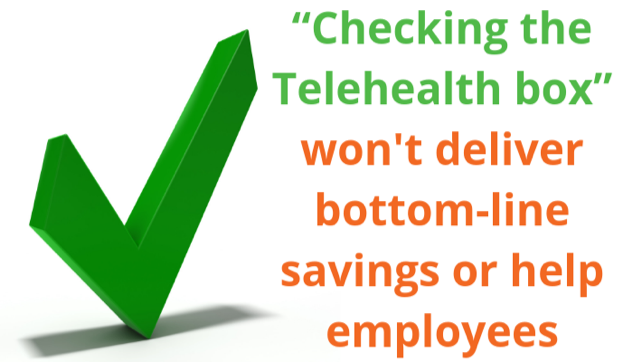
Click here for 3 Resources:
The Ultimate Guide to Getting
High-Usage with Telehealth.
Last month, when I first mentioned that Advocacy was a part of freshbenies services, I had a different broker say, “Oh, my clients don’t need that. Between the carrier and my support team, we do that.” As I asked the expertise of his in-house team, he explained that his Account Manager answers client questions that come in from employers. It added up to “many questions every week.”
A premium-level Advocacy service is much different than carrier or account manager support. This used to be enough, but clients now have so many more needs than they used to.
Today’s plans have higher and higher out of pocket costs – this year the average family of four will spend $4,700. And all of us guide members to be better consumers, more engaged and more empowered. But providers and the system aren’t built to answer those questions, so people feel out of control.
Let’s start by addressing Advocacy vs. a medical carrier’s customer service. Today’s studies (such as a recent Harris Poll) show only 7% of people trust advice they get from the insurance company. Members consider them the "fox guarding the hen house." Which explains why they aren’t comfortable calling the carrier to answer all their health navigation questions.
Second, the carriers are completely unwilling to share quality and price transparency information. I remember when I worked for a large insurance company in the late ‘90s and we tried to build a “quality rating” into our provider networks. The physicians in the state revolted and threatened to leave if we didn’t rate them anything except as “A” providers. We back-pedaled. And to this day a member won’t get an answer from customer service if they ask, “Who’s the best quality physician in my network?” or “Where’s the best quality facility to get my knee surgery? – and also, “What will it cost?”

Next, let’s look at Advocacy vs. a brokerage’s support team. 98% of broker teams aren’t prepared to answer these transparency questions in-house. Unless a brokerage has dedicated people to address member-level questions, backed up by substantial quality and price transparency tools, with contact info and strong communication to every single member in their book of business – then they’re not meeting this need.
Even if you provide a high-level of consulting to your groups, your clients are missing out on HUGE benefits that come from a dedicated expert who will…
- Find highly rated in-network providers
- Provide price and value comparisons before a procedure
- Research prescriptions for lower-cost options
- Review and negotiate medical bills, and more
A fully-insured client needs this support to get the most out of their plan. And a self-insured plan has even more financial incentive to empower their members.
With a freshbenies membership, employees have a dedicated Health Pro® to provide ultra-personalized support that leads to smarter, more confident healthcare decisions. Click here to watch videos with 3 insights in 3 minutes on how advocacy is a game-changer.
Last week a broker and I were talking with an employer who is a client. When talking about the freshSAVINGS networks (for prescriptions, dental, vision, chiropractic, hearing aids, lab tests, MRI/CT scans, medical equipment, and diabetic supplies), I said that they’re helpful in cases where these things aren’t adequately covered in today’s medical plans. The HR Director said, “Oh, I don’t think my people would ever use these.”
You know what's interesting? Only half of the group’s employees were on the company medical plan – which had $4000 out of pocket costs. And the other half of the employees didn’t even have medical insurance from the employer; although they all had a freshbenies membership. She didn’t understand her people’s needs.
Here are three things to consider in today’s market:
- Are all discount networks alike? No. The way to judge them is to look at how WIDE the network is and how DEEP the discount is. You might find a cheap discount card that’s weak on one or the other and so poorly set up that the provider didn’t even know they were in the network. In this case, the value is like a coupon downloaded from the internet. The networks in a freshbenies membership are typically built by carriers, with an actual contract and provider office-staff education, and supported by our Member Services team. For example, our Dental Savings Network is Humana’s Dental Access network. To see the extent of the providers locally, go to our website, app or portal and search the provider list for your zip code.
- When are they worthwhile with today’s plans? Start by recognizing the needs that aren’t covered under today’s plans – such as non-formulary drugs, braces, teeth whitening, designer eyewear, LASIK surgery, etc. And remember a freshbenies membership includes the immediate family, so their plans might not include coverage for these needs at all. Next, admit that many things covered are first tied to meeting a much higher deductible. In these cases, our networks become a great place for the member to research pricing.
- Why don’t we call them DISCOUNT networks? Because words matter. You’ll notice we never call them “discount” networks. We always use the term “savings networks.” People don’t want discounted healthcare – but they love to save. I’d suggest using the term “savings networks” with your clients.
An hour after talking with the HR Director, we received a new testimonial from a member - one of many about success with the savings networks...
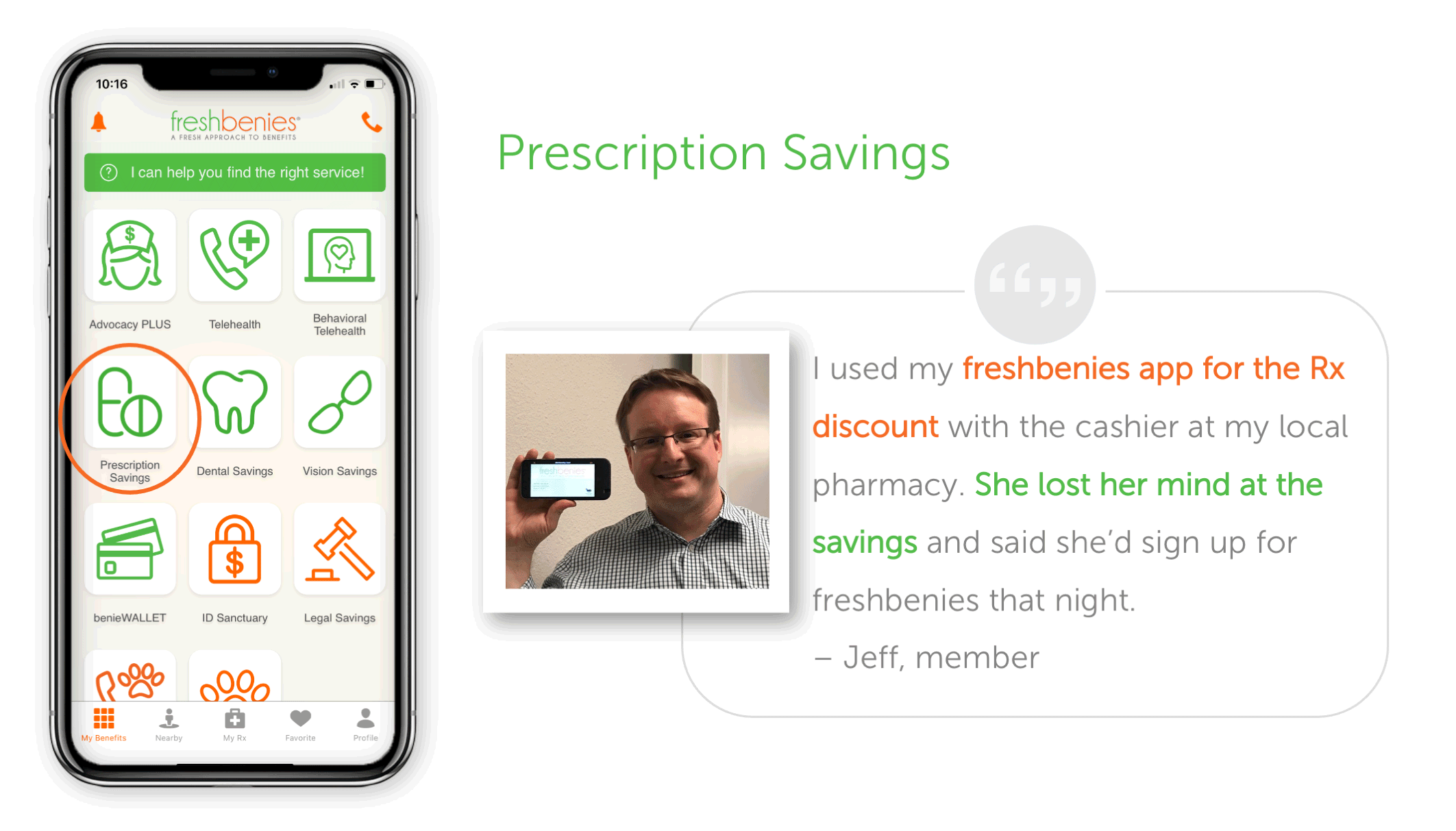
If I hear this statement, it usually comes from a newly-appointed broker. In the employer conversation, they start by discussing the medical plan, then standard ancillary (dental, vision, life, disability), then other ancillary (HSA accounts, voluntary benefits, wellness, etc.). Then, at the end they ask if the employer wants to buy freshbenies. As we all know, at that point, the client has no money left.
Our most successful brokers recognize that if they let every bit of the benefits budget get gobbled up by medical premiums, their clients and their employees will all lose money. They believe that with today’s higher out-of-pocket-cost plans, their clients can’t afford NOT to have these consumerism tools.
These brokers simply change the priority order. During their discovery and review of the current plan, they listen for issues - people spending too much on doctor visits, confusion navigating the system, complaints about out-of-pocket costs, etc. Then, DURING the core medical insurance planning session, they make sure they re-shuffle the available funds to make room for $10 (or less) PEPM for freshbenies to round out the overall benefits package.
The client recommendation is along these lines: “Based on your input, our solution includes a plan like X. And while it’s a little more cost for the 15% of people who reach their maximum, it also includes no-cost primary care telehealth, no-cost online specialist consults, advocates to help people navigate the system for quality and price, and even consumerism savings networks (for prescription, dental or vision) to help fill the gaps.”
To be clear, I’m NOT saying brokers are dumb. Far from it. Today’s consultants are inundated with complex planning, dozens (or hundreds) of carrier options, continually changing regulations, and changing needs of today’s employment marketplace. But in this complex environment, if a consultant makes excuses rather than investigating and installing proven tools that help people control their healthcare, that’s just like pushing on the “PULL” door.
Now it's your turn! Do any of these misconceptions surprise you? What new strategies do you employ to help your clients boost their overall benefits package? Comment below or email me at reid@freshbenies.com.




